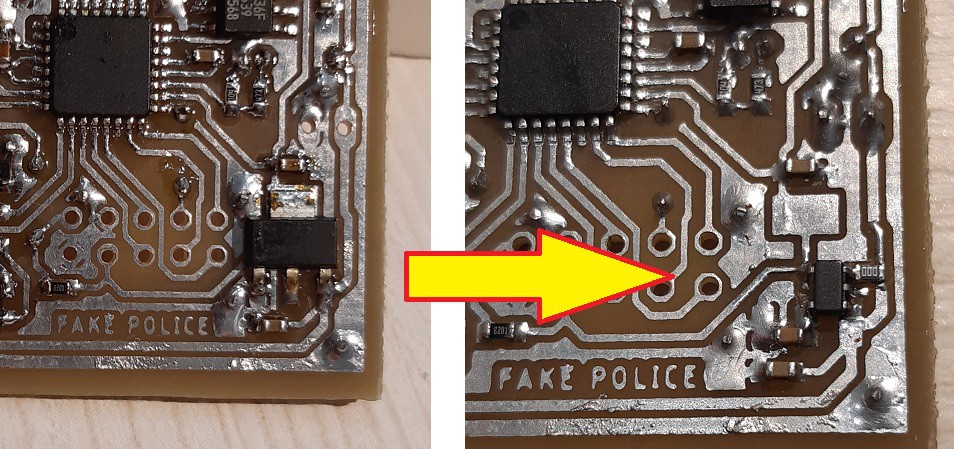LDO change
Since this thing is powered by a Li+ battery (4.2V max) I needed to drop it to 3.3V for nRF24L01. This means using either some sort of buck converted or an LDO. Buck converter would be an overkill since voltage difference is not that great, neither are the currents, so I opted for the LDO AMS1117-3.3V. This was actually a bad idea since the voltage drop is too big, and I couldn't get more than 3.1V at the output. This meant some last-minute changes and LDO replacement, so I went for the MAX8888 LDO which is excellent for this application.
Now I have a good 3.3V for entire usable range of battery voltage.

Crystal change
The idea was to use the external clock for ATmega328P but later on I found that I should better use the crystal clock inputs to Asynchroniously clock the internal Timer and implement an RTC. I removed the 8MHz crystal and soldered on the 32.768 kHz one and configured ATmega to use internal 8MHz clock. Now I have a somewhat accurate RTC (but not really because of the temperature drift). The RTC can be set remotely via the controller. Now I only need to figure out what to use it for instead of simply counting seconds and minutes for periodic operations (e.g. telemetry event).
 trax
trax
Discussions
Become a Hackaday.io Member
Create an account to leave a comment. Already have an account? Log In.